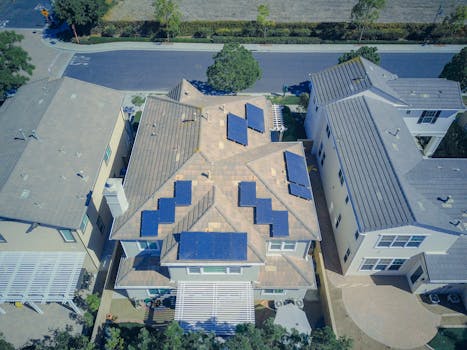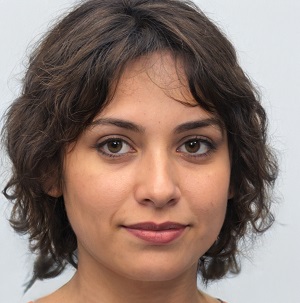“Solar Inverters 101: Powering Your Knowledge for a Brighter Tomorrow.”
Solar inverters are essential components of solar energy systems, converting the direct current (DC) generated by solar panels into alternating current (AC) that can be used by household appliances and fed into the electrical grid. Understanding solar inverters is crucial for anyone considering solar energy, as they play a vital role in maximizing energy efficiency and system performance. This guide will cover the different types of solar inverters, their functions, installation considerations, and maintenance tips, providing a comprehensive overview for homeowners and businesses looking to harness solar power effectively. Whether you’re a novice or seeking to deepen your knowledge, this introduction to solar inverters will equip you with the information needed to make informed decisions about your solar energy system.
Types Of Solar Inverters: A Comprehensive Overview
When considering solar energy systems, understanding the various types of solar inverters is crucial for optimizing performance and efficiency. Solar inverters play a pivotal role in converting the direct current (DC) generated by solar panels into alternating current (AC), which is the form of electricity used in homes and businesses. There are several types of solar inverters, each with its unique features and benefits, making it essential to choose the right one for your specific needs.
The most common type of solar inverter is the string inverter. This system connects multiple solar panels in a series, or “string,” allowing them to work together to produce electricity. String inverters are popular due to their simplicity and cost-effectiveness. However, they do have limitations, particularly when it comes to shading. If one panel in the string is shaded or underperforming, it can affect the entire string’s output. Despite this drawback, string inverters are widely used in residential installations where shading is minimal and panel orientation is uniform.
In contrast, microinverters offer a more advanced solution by being installed on each individual solar panel. This design allows each panel to operate independently, maximizing energy production even if some panels are shaded or misaligned. Microinverters are particularly beneficial in installations with varying roof angles or shading issues, as they can significantly enhance overall system performance. While they tend to be more expensive than string inverters, the increased efficiency and energy yield can justify the higher initial investment.
Another option is the power optimizer, which combines features of both string inverters and microinverters. Power optimizers are installed on each panel, optimizing the DC output before sending it to a central string inverter. This setup allows for improved performance in partially shaded conditions while maintaining the cost-effectiveness of a string inverter system. Power optimizers can be an excellent choice for homeowners looking to balance performance and budget, especially in environments where shading is a concern.
For larger commercial installations, central inverters are often the preferred choice. These inverters are designed to handle significant amounts of power and are typically used in utility-scale solar farms. Central inverters consolidate the output from multiple strings of solar panels, making them efficient for large-scale operations. However, they require careful planning and installation, as any issues with the central inverter can impact the entire system’s performance.
In addition to these primary types, hybrid inverters have emerged as a versatile option for those looking to integrate battery storage into their solar energy systems. Hybrid inverters can manage both solar energy generation and battery storage, allowing homeowners to store excess energy for use during peak demand times or outages. This capability not only enhances energy independence but also provides a safeguard against rising electricity costs.
Ultimately, the choice of solar inverter depends on various factors, including system size, budget, and specific energy needs. Each type of inverter has its advantages and disadvantages, making it essential to assess your unique situation before making a decision. By understanding the different types of solar inverters available, you can make an informed choice that maximizes the efficiency and effectiveness of your solar energy system. As the solar industry continues to evolve, staying informed about these technologies will empower you to harness the full potential of solar energy for your home or business.
How To Choose The Right Solar Inverter For Your System
Choosing the right solar inverter for your solar energy system is a crucial step that can significantly impact the efficiency and performance of your installation. With various types of inverters available on the market, understanding their functions and features is essential for making an informed decision. To begin with, it is important to recognize the different types of solar inverters: string inverters, microinverters, and power optimizers. Each type has its own advantages and disadvantages, which can influence your choice based on your specific needs and circumstances.
String inverters are the most common type used in residential solar systems. They connect multiple solar panels in a series, converting the direct current (DC) generated by the panels into alternating current (AC) for use in your home. While string inverters are generally more affordable and easier to install, they can be less efficient in situations where shading occurs on some panels, as the performance of the entire string can be affected. Therefore, if your roof has shading issues or varying orientations, you may want to consider alternative options.
Microinverters, on the other hand, are installed on each individual solar panel, allowing for independent operation. This means that if one panel is shaded or underperforming, it does not impact the performance of the others. Microinverters tend to offer higher energy production in certain conditions, making them an excellent choice for systems with shading or complex roof layouts. However, they are typically more expensive than string inverters, which is an important factor to consider when budgeting for your solar installation.
Power optimizers serve as a middle ground between string inverters and microinverters. They are installed on each panel but work in conjunction with a central string inverter. Power optimizers maximize the energy output of each panel while still allowing for the cost-effectiveness of a string inverter. This option can be particularly beneficial if you want to mitigate shading issues without the higher costs associated with microinverters.
In addition to the type of inverter, you should also consider the inverter’s efficiency rating. The efficiency of a solar inverter indicates how well it converts DC electricity into AC electricity. Higher efficiency ratings mean more energy is converted and less is wasted, which can lead to greater overall energy production from your solar system. Look for inverters with efficiency ratings above 95%, as these will typically provide better performance.
Another important factor to consider is the inverter’s warranty and lifespan. Most solar inverters come with warranties ranging from five to twenty years, depending on the manufacturer and model. A longer warranty can provide peace of mind, as it indicates the manufacturer’s confidence in their product’s durability and performance. Additionally, consider the inverter’s expected lifespan, as some models may require replacement sooner than others.
Finally, it is essential to evaluate the compatibility of the inverter with your solar panels and overall system design. Consulting with a professional installer can help ensure that you select an inverter that meets your specific energy needs and integrates seamlessly with your solar array. By taking the time to research and understand the various options available, you can make a well-informed decision that maximizes the efficiency and effectiveness of your solar energy system, ultimately leading to greater energy savings and a reduced carbon footprint.
The Role Of Solar Inverters In Energy Efficiency
Solar inverters play a crucial role in the efficiency and effectiveness of solar energy systems, serving as the bridge between the solar panels and the electrical grid or home appliances. At their core, solar inverters convert the direct current (DC) electricity generated by solar panels into alternating current (AC) electricity, which is the form of electricity most commonly used in homes and businesses. This conversion is essential because while solar panels generate DC electricity, the majority of household appliances and the electrical grid operate on AC electricity. Thus, without inverters, the energy produced by solar panels would be unusable for everyday applications.
Moreover, the efficiency of solar inverters directly impacts the overall performance of a solar energy system. High-quality inverters can achieve conversion efficiencies of over 95%, meaning that a minimal amount of energy is lost during the conversion process. This efficiency is vital, as even small losses can accumulate over time, significantly affecting the total energy output of a solar installation. Therefore, selecting an inverter with a high efficiency rating is a critical consideration for anyone looking to maximize their solar energy investment.
In addition to their primary function of energy conversion, solar inverters also play a significant role in monitoring and optimizing energy production. Many modern inverters come equipped with advanced monitoring systems that provide real-time data on energy production, system performance, and potential issues. This capability allows homeowners and businesses to track their energy generation and consumption patterns, enabling them to make informed decisions about energy usage. Furthermore, by identifying inefficiencies or malfunctions in the solar system, these monitoring features can help ensure that the system operates at peak performance, thereby enhancing overall energy efficiency.
Another important aspect of solar inverters is their ability to manage energy flow. Inverters can regulate the amount of electricity sent to the grid or used on-site, which is particularly beneficial in net metering scenarios. In net metering, excess energy produced by solar panels can be fed back into the grid, allowing homeowners to receive credits on their utility bills. In this context, inverters help optimize the balance between energy consumption and production, ensuring that homeowners can take full advantage of their solar energy systems while minimizing reliance on grid electricity.
Furthermore, solar inverters contribute to energy efficiency through their role in grid stability. By managing the flow of electricity and ensuring that it meets grid requirements, inverters help maintain a stable and reliable energy supply. This is particularly important as more renewable energy sources, such as solar and wind, are integrated into the grid. Inverters equipped with smart technology can respond to fluctuations in energy demand and supply, thereby enhancing the resilience of the electrical grid.
In conclusion, solar inverters are indispensable components of solar energy systems, significantly influencing energy efficiency and overall performance. Their ability to convert DC to AC electricity, monitor system performance, manage energy flow, and contribute to grid stability underscores their importance in the transition to renewable energy. As the demand for sustainable energy solutions continues to grow, understanding the role of solar inverters becomes increasingly essential for anyone looking to harness the power of the sun effectively. By investing in high-quality inverters and leveraging their advanced features, users can maximize their solar energy systems’ efficiency and reliability, ultimately leading to greater energy independence and sustainability.
Common Issues With Solar Inverters And Their Solutions
Solar inverters play a crucial role in the efficiency and effectiveness of solar energy systems, converting the direct current (DC) generated by solar panels into alternating current (AC) that can be used in homes and businesses. However, like any technology, solar inverters can encounter issues that may affect their performance. Understanding these common problems and their solutions is essential for maintaining a reliable solar energy system.
One of the most frequent issues with solar inverters is overheating. Inverters can become excessively hot due to prolonged exposure to direct sunlight, inadequate ventilation, or internal component failure. When an inverter overheats, it may shut down to protect itself, leading to a loss of energy production. To address this issue, it is vital to ensure that the inverter is installed in a shaded area with proper airflow. Additionally, regular maintenance checks can help identify any internal issues that may contribute to overheating, allowing for timely repairs or replacements.
Another common problem is inverter failure, which can stem from various factors, including manufacturing defects, electrical surges, or environmental conditions. When an inverter fails, it can result in a complete halt of energy production, which can be particularly concerning for homeowners relying on solar power. To mitigate this risk, it is advisable to invest in high-quality inverters from reputable manufacturers and to consider installing surge protection devices. Furthermore, regular monitoring of the inverter’s performance can help detect early signs of failure, enabling proactive measures to be taken before a complete breakdown occurs.
In addition to overheating and failure, communication issues can also arise between the inverter and the monitoring system. This can lead to inaccurate data regarding energy production and system performance, making it difficult for users to assess the efficiency of their solar energy system. To resolve communication problems, it is essential to check the connections and ensure that the inverter is properly configured. Updating the inverter’s firmware can also help improve communication and enhance overall performance.
Moreover, users may encounter issues related to inverter efficiency. Over time, inverters can experience a decline in efficiency due to dust accumulation, component wear, or outdated technology. This decline can result in lower energy output, which can be frustrating for users who expect optimal performance from their solar systems. To combat this issue, regular cleaning and maintenance of the inverter and surrounding components are crucial. Additionally, upgrading to a more efficient inverter model can significantly improve energy production and overall system performance.
Lastly, users may experience issues related to grid connection. Inverters are designed to synchronize with the electrical grid, but fluctuations in grid voltage or frequency can cause the inverter to disconnect temporarily. This disconnection can lead to interruptions in energy production. To address this, it is important to work with a qualified installer who can ensure that the inverter is compatible with local grid requirements. Furthermore, some modern inverters come equipped with advanced grid management features that can help mitigate these issues.
In conclusion, while solar inverters are essential for harnessing solar energy effectively, they are not without their challenges. By understanding common issues such as overheating, failure, communication problems, efficiency decline, and grid connection issues, users can take proactive steps to maintain their systems. Regular maintenance, quality installations, and timely upgrades can significantly enhance the longevity and performance of solar inverters, ensuring that users continue to benefit from clean, renewable energy for years to come.
Q&A
1. **What is a solar inverter?**
A solar inverter is a device that converts the direct current (DC) electricity generated by solar panels into alternating current (AC) electricity, which can be used by home appliances and fed into the electrical grid.
2. **What are the different types of solar inverters?**
The main types of solar inverters are string inverters, microinverters, and power optimizers. String inverters connect multiple solar panels in series, microinverters are installed on each panel individually, and power optimizers work with string inverters to maximize energy output from each panel.
3. **How do solar inverters affect system efficiency?**
Solar inverters play a crucial role in system efficiency by optimizing the conversion of DC to AC power. They also manage the performance of solar panels, ensuring that energy production is maximized even when some panels are shaded or underperforming.
4. **What features should I look for in a solar inverter?**
Key features to consider include efficiency ratings, warranty length, monitoring capabilities, compatibility with battery storage systems, and safety certifications. Additionally, consider whether the inverter has advanced features like grid support and smart technology integration.
Conclusion
Solar inverters are essential components of solar energy systems, converting the direct current (DC) generated by solar panels into alternating current (AC) for use in homes and businesses. Understanding the different types of inverters—string inverters, microinverters, and power optimizers—along with their efficiency, installation requirements, and maintenance needs, is crucial for optimizing solar energy production. Proper selection and installation of solar inverters can significantly impact the overall performance and longevity of a solar power system, making them a key factor in the successful adoption of solar energy technology.




